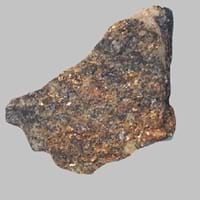Definition
Adakite is an intermediate to felsic volcanic rock that has geochemical characteristics of magma which is said to be formed by partial melting of altered basalt that is subducted below volcanic arcs
Vogesite is a porphyritic alkaline igneous rock and is a variety of Lamprophyre which is dominated by essential amphibole, usually hornblende, and potassic feldspar
Origin
Adak, Aleutian Islands
Unknown
Discoverer
Defant and Drummond
Unknown
Etymology
From Adak, Aleutian Islands
From the variety of Lamprophyre Greek lampros bright and shining + porphureos purple
Class
Igneous Rocks
Igneous Rocks
Sub-Class
Durable Rock, Medium Hardness Rock
Durable Rock, Medium Hardness Rock
Other Categories
Fine Grained Rock, Medium Grained Rock, Opaque Rock
Coarse Grained Rock, Fine Grained Rock, Opaque Rock
Texture
Porphyritic
Porphyritic
Color
Black, Brown, Light to Dark Grey
Black, Bluish - Grey, Brown, Dark Greenish - Grey, Green, Grey
Durability
Durable
Durable
Appearance
Dull and Soft
Dull, Banded and Foilated
Interior Uses
Decorative Aggregates, Floor Tiles, Homes, Hotels, Kitchens
Decorative Aggregates, Entryways, Flooring, Homes, Interior Decoration
Exterior Uses
As Building Stone, As Facing Stone, Office Buildings
As Building Stone, As Facing Stone, Garden Decoration, Office Buildings, Paving Stone
Other Architectural Uses
Whetstones
Curbing
Construction Industry
As Dimension Stone, Cobblestones, Rail Track Ballast, Roadstone
As Dimension Stone, Cement Manufacture, for Road Aggregate, Making natural cement, Manufacture of Magnesium and Dolomite Refractories
Medical Industry
Not Yet Used
Taken as a Supplement for Calcium or Magnesium
Antiquity Uses
Monuments, Sculpture, Small Figurines
Artifacts, Monuments, Sculpture
Commercial Uses
Commemorative Tablets, Pottery, Used in aquariums
An Oil and Gas Reservoir, As a Feed Additive for Livestock, Gemstone, Metallurgical Flux, Production of Lime, Soil Conditioner, Source of Magnesia (MgO)
Types
Not Available
Minette, Alnoite, Camptonite, Monchiquite, Fourchite, Vogesite, Appinite and Spessartite
Features
Has High structural resistance against erosion and climate, Host rock for Diamond, Very fine grained rock
Always found as volcanic pipes over deep continental crust, Host rock for Diamond, Is one of the oldest rock, Surfaces are often shiny
Archaeological Significance
Famous Monuments
Data Not Available
Data Not Available
Famous Sculptures
Data Not Available
Data Not Available
Formation
Adakite rocks are formed when the hydrous fluids are released from minerals that break down in metamorphosed basalt, and rise into the mantle they initiate partial melting.
Vogesite formation takes place deep beneath the Earth’s surface at around 150 to 450 kilometres, and are erupted rapidly and violently.
Mineral Content
Olivine, Plagioclase, Pyroxene
Amphibole, Carbonate, Garnet, Micas, Olivine, Phlogopite, Pyroxene
Compound Content
Aluminium Oxide, MgO, Silicon Dioxide
Aluminium Oxide, NaCl, CaO, Iron(III) Oxide, FeO, Potassium Oxide, MgO, MnO, Sodium Oxide, Silicon Dioxide, Titanium Dioxide
Types of Metamorphism
Cataclastic Metamorphism, Contact Metamorphism, Impact Metamorphism, Regional Metamorphism
Burial Metamorphism, Cataclastic Metamorphism, Contact Metamorphism, Hydrothermal Metamorphism, Impact Metamorphism, Regional Metamorphism
Types of Weathering
Chemical Weathering, Mechanical Weathering
Biological Weathering, Chemical Weathering, Mechanical Weathering
Types of Erosion
Coastal Erosion, Sea Erosion, Water Erosion
Chemical Erosion, Coastal Erosion, Glacier Erosion, Sea Erosion, Water Erosion, Wind Erosion
Grain Size
Fine to Medium Grained
Fine to Coarse Grained
Fracture
Conchoidal
Conchoidal
Streak
Bluish Black
White
Porosity
Less Porous
Very Less Porous
Luster
Grainy, Pearly and Vitreous
Subvitreous to Dull
Cleavage
Not Available
Conchoidal
Toughness
Not Available
Not Available
Specific Gravity
Not Available
2.86-2.87
Transparency
Opaque
Translucent to Opaque
Density
Not Available
2.95-2.96 g/cm3
Resistance
Heat Resistant, Pressure Resistant, Wear Resistant
Heat Resistant, Impact Resistant
Deposits in Eastern Continents
Asia
India, Russia
Russia
Africa
Ethiopia, Somalia, South Africa
Angola, Botswana, Cameroon, Ethiopia, South Africa
Europe
Iceland
England, Hungary, Iceland, United Kingdom
Others
Not Yet Found
Antarctica, Greenland
Deposits in Western Continents
North America
Canada, USA
Canada, Mexico, USA
South America
Brazil
Argentina, Colombia, Ecuador
Deposits in Oceania Continent
Australia
Not Yet Found
New South Wales, New Zealand, Queensland, South Australia, Western Australia
All about Adakite and Vogesite Properties
Know all about Adakite and Vogesite properties here. All properties of rocks are important as they define the type of rock and its application. Adakite and Vogesite belong to Igneous Rocks.Texture of Adakite is Porphyritic whereas that of Vogesite is Porphyritic. Adakite appears Dull and Soft and Vogesite appears Dull, Banded and Foilated. The luster of Adakite is grainy, pearly and vitreous while that of Vogesite is subvitreous to dull. Adakite is available in black, brown, light to dark grey colors whereas Vogesite is available in black, bluish - grey, brown, dark greenish - grey, green, grey colors. The commercial uses of Adakite are commemorative tablets, pottery, used in aquariums and that of Vogesite are an oil and gas reservoir, as a feed additive for livestock, gemstone, metallurgical flux, production of lime, soil conditioner, source of magnesia (mgo).










